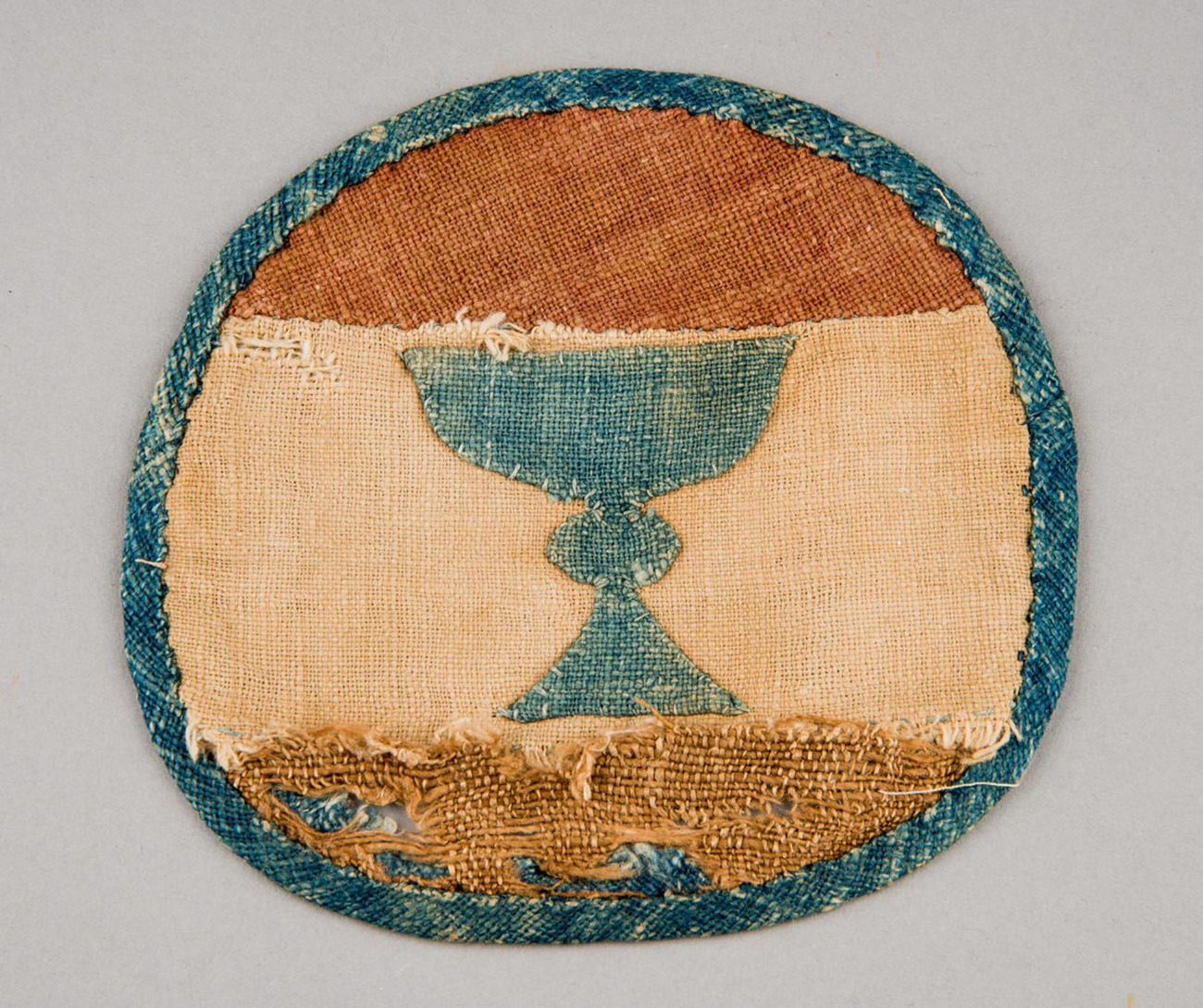Cupbearer blazon
14th–15th centuries, Egypt
Appliqué cotton
Kelsey Museum of Archaeology, 88027
Cupbearer blazon
This rather unadorned appliqué roundel is divided
into three registers, with a silhouetted image of a goblet in the
center. The roundel would have been stitched to a garment and worn as a
blazon or symbol of office. During the Mamluk period in Egypt, this
blazon represented the office of the saqi, or royal cupbearer. As one of
the sultan's close cohorts, the cupbearer served the ruler wine and
other libations. This and other blazons were represented on objects
(such as glass lamps and ceramic vessels) and architecture, in which
they served to identify an individual by the office he held.
Bibliography: Ellis 2001, 80–81, fig. 54. Lamm 1937, 67; Mayer 1933,
10–11; Suriano 1998; Walker 2000; and Whelan 1988, 220. |

